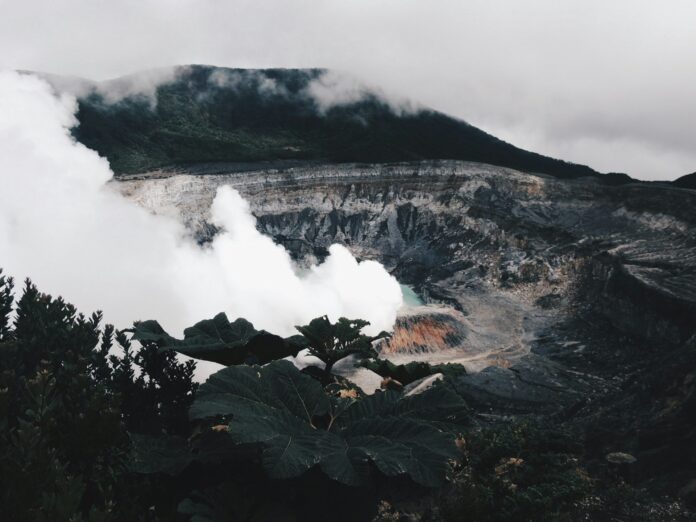Contrary to popular belief, and reassuring for those who savour the homely, comforting quality of an open fire, wood-burning stoves are not set to be banned in the UK anytime soon.
That said, as of February 2021, huge changes have been afoot regarding the way a domestic wood burning stove is permitted to run, and this primarily concerns its fuel.
According to a report in the Guardian in February of this year which coincided with new government guidelines encouraging a phasing out of harmful fuels, ‘’Domestic wood burning has become the single biggest source of small particle air pollution in the UK, producing three times more than road traffic, government data shows’’.
That said, this doesn’t mean you should fill in your wood burning stove and whack up the central heating when Winter next rolls around. Rather, according to Dr. Gary Fuller, a member of the government’s air quality group, via The Comprehensive European Directory of Regulation on the Environment, ‘’One of the ways to tackle wood burning is to get more information out to people, as they have in New Zealand, to encourage people to burn their wood better. We have to engage and the starting point is to know who is burning wood and why they are doing so, and that is what this survey does.’’
Today, we’re here to do just that. Here are 5 tips for ensuring your wood burning stove is safe and clean in 2023.
BANNED FUELS
Firstly, let’s talk about ‘PM2.5’ since you’re going to hear this term a lot in the discussion of wood burning stoves and appropriate fuels. PM2.5 are tiny particle pollutants which are particularly bad for human health, and can infiltrate the lungs and the blood especially deeply.
In February of 2020, George Eustace, the Environment Secretary, together with the Department for Rural Affaris (DEFRA), announced that the country was ‘’moving towards the use of cleaner fuels such as dry wood we can all play a part in improving the health of millions of people’’.
The key thing here for the wood burning stove owner is ‘dry’ wood. Because wet logs (as well as coal) produce far higher concentrations of smoke than seasoned and dry wood, and the harm to the homeowner is hugely increased, too.
According to the Huffington Post, the new ban, which came into force in a ‘gradual’ manner in February 2021, means that: ‘’Sales of bagged traditional house coal will be phased out by February 2021. The sale of loose coal direct to customers will end by 2023.’’
What’s more, ‘’Sales of wet wood in small units (less than 2 cubic metres) will be phased out from February 2021. Wet wood in volumes greater than 2 cubic metres will also have to be sold with advice on how to dry it before burning.’’
So, the good news is that this new legislation doesn’t mean that wood burning stoves are banned. Rather, the most polluting forms of their fuel are.
FUELS YOU CAN STILL USE
You’re probably wondering at this stage what fuels you can use. Those ‘clean alternatives’ which the government mentioned are often referred to as ‘seasoned wood’. All this means is that it has been dried in a kiln to ensure a moisture content of 20% or less. This is the type of wood which the government are now encouraging you to buy.
Alternatively, you can use one of several ‘smokeless fuels. These are anthracite, semi-anthracite, gas or low volatile steam coal. Check out DEFRA’s list of authorised fuels for more.
IF YOU’RE BUYING A NEW WOOD BURNING STOVE, ENSURE IT’S DEFRA EXEMPT
Should you already have a wood burning stove in your home, then don’t worry, you don’t suddenly have to replace it by law. If you’re buying a new wood burning stove, however, then you guessed it; there is a DEFRA list of approved stoves which emit significantly less smoke. Your new stove purchase must be on that list.
For homeowners who already own a wood burning stove – which is potentially much older and more harmful than newer models – the government encourages that you not only burn just dry wood, but that you also install an electrostatic filter, which helps reduce particle emissions.
It’s also essential that you keep your wood burning stove and chimney clean to reduce build-ups of dirt and subsequent increased emissions.
MAINTAIN & CLEAN BOTH THE STOVE & CHIMNEY REGULARLY
Build-ups of soot and tar are enemies of your stove’s function and can cause greater density of emissions, too, so it’s essential that you regularly maintain your wood burning stove. You’ll need to clean your stove of ash regularly to discourage any accumulation of detrimental dirts, and conduct a more thorough clean every six months or so, too. Best practice also suggests an annual inspection of the stove, to prevent chimney fires and protect against pipe erosion.
You should also properly clean wood stove glass as it can accumulate tar and dirt quickly. Finally, it’s vital that you clean your chimney to prevent soot and creosote from building up in your chimney, as these can lead both lead blockages and unwanted fires.
You don’t necessarily need to hire a chimney sweep. You can, alternatively, invest in a chimney rod (a long handled, flexible wire brush) and do the job yourself. Just remember to lay some tarp; this job is mucky!
ENSURE AIRFLOW TO REDUCE FUEL CONSUMPTION
Ensuring proper airflow within your wood burning stove is crucial, too, as doing so allows smoke to escape via the chimney rather than into your room. Aside from ensuring that your chimney is clear of debris and soot, you should read up a little on controlling airflow.
Prior to lighting your fire, check that there’s not a build up of ash from a previous fire blocking the grate (although a thin layer is fine). If there is, poke a few holes through it, as your fire needs a supply of air from underneath, and this will promote good flow from below.
Whilst on the subject of air, before lighting, open the air controls fully, which will be indicated via symbols on the front of the stove, usually a simple flick between ‘closed’ and ‘open’. Once the fire is lit, you can adjust the controls as per your preferences.
THE BOTTOM LINE
Though the headlines may have initially alarmed wood burning stove enthusiasts, the small print offers some relief. Instead of an outright ban, homeowners should instead prioritise the purchase of dry fuel, and maintain consistent good practice in the upkeep of their stoves to ensure their longevity and safety. Now, who’s got a match?
While we’ve got your attention on all things green, here are 6 IDEAL ways you can play your part in saving the environment.




